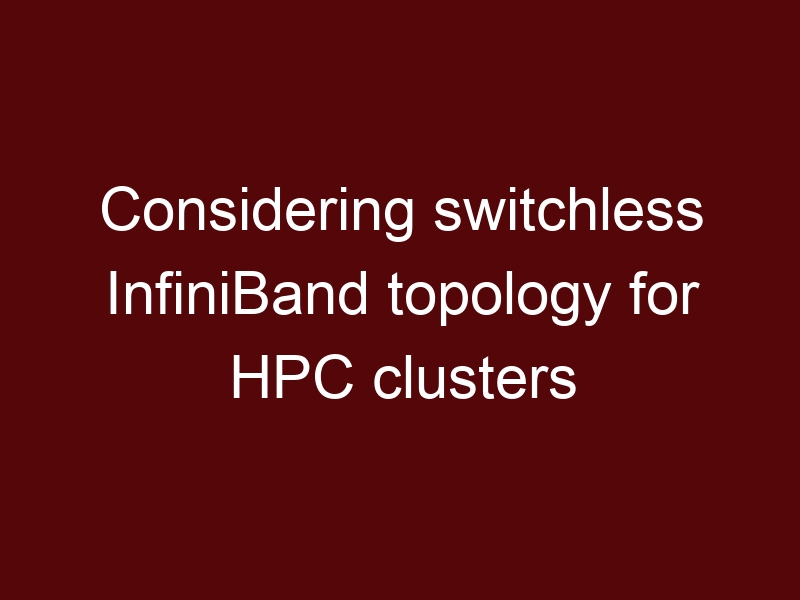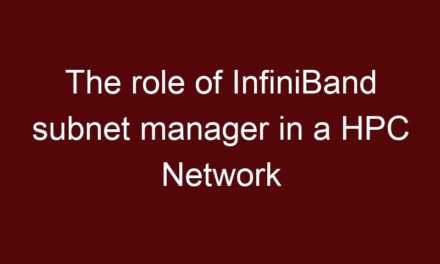A switchless InfiniBand topology, also known as a “point-to-point” topology, is a configuration where InfiniBand devices are directly connected to each other without the use of switches. In this topology, each device has a direct connection to every other device in the network. This is in contrast to traditional InfiniBand networks, which typically use switches to route and manage data traffic between devices.
In a switchless topology, devices communicate directly using a point-to-point link. Each device needs to maintain a table that maps destination addresses to the appropriate link for direct communication. When a device wants to send data to another device, it uses the routing table to determine the correct link to use, and the data is transmitted directly along that link.
Circumstances for Using a Switchless Topology:
- Small Clusters: Switchless topologies are best suited for small clusters with a limited number of nodes. In larger clusters, the complexity and overhead of maintaining direct connections between all devices can become impractical.
- Low Latency Requirements: Switchless topologies can offer lower latency compared to routed networks because there is no switch involved in data routing. This can be beneficial for applications that require extremely low communication delay, such as real-time simulations or high-frequency trading.
- Simplicity: Switchless topologies are relatively simple to set up and manage since there are no switches to configure. This simplicity can be advantageous for smaller deployments where minimizing setup complexity is a priority.
- Specialized Workloads: Some specific HPC workloads may benefit from the low latency and direct communication offered by a switchless topology. Examples include tightly coupled parallel applications or specific research projects that require optimized communication.
Considerations and Limitations:
While switchless topologies have their advantages, they also come with limitations and considerations:
- Scalability: Switchless topologies don’t scale well as the number of nodes increases. The number of direct connections between devices grows quadratically, leading to increased complexity and reduced performance for larger clusters.
- Lack of Redundancy: Switchless topologies lack the redundancy provided by switches. If a link or node fails, it can disrupt communication between specific pairs of devices.
- Limited Flexibility: The lack of switches can limit flexibility in how data is routed. Routed networks with switches provide more control over how traffic flows through the network.
In summary, switchless InfiniBand topologies are suitable for small-scale clusters with low latency requirements and specialized workloads. They offer simplicity and direct communication benefits but come with scalability and redundancy limitations that need to be carefully considered based on the specific requirements of the HPC environment.





